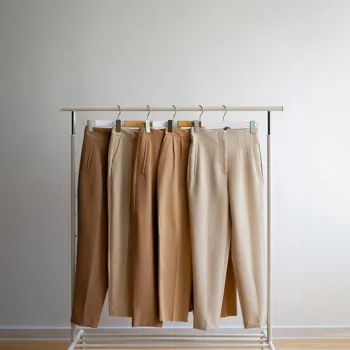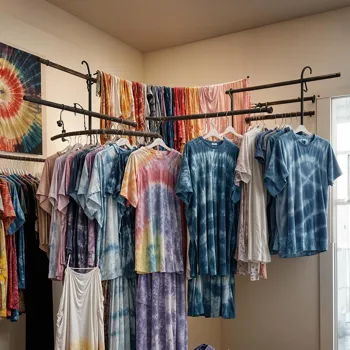Discover how to merge fashion with sustainability in this article. Make eco-conscious choices now!
In the bustling bazaars and swanky malls of India, fashion is more than just clothes; it's a statement.
But behind the glitz and glamour lies a sobering truth: the fashion industry is a major polluter.

From the water-intensive cotton farming to the toxic dyes used in manufacturing and the mountains of textile waste, the impact on our planet is undeniable. However, it's not all doom and gloom.
A new wave of conscious consumers is rising, demanding change and seeking ways to make their wardrobes more sustainable. This article explores how you can navigate the world of fashion with a lighter footprint, making choices that are not only stylish but also kind to the environment.
Sustainable fashion promotes ethical practices and reduces environmental impact
The concept of sustainable fashion goes beyond just using eco-friendly materials. It encompasses the entire lifecycle of a garment, from its design and production to its use and disposal.

Fast fashion, with its trend-driven, cheap clothing, encourages overconsumption and contributes significantly to environmental damage. Garments are often made with low-quality materials and are designed to be disposable, leading to a massive waste problem.
Mountains of discarded clothes end up in landfills, releasing harmful greenhouse gases as they decompose. Furthermore, the production processes often involve unethical labor practices, with garment workers facing poor working conditions and low wages.
Embracing sustainable fashion means slowing down, buying less, and choosing quality over quantity. This shift in mindset is crucial for creating a more responsible and ethical fashion industry.
Be a mindful shopper by choosing sustainable materials and supporting ethical brands
One of the most impactful things you can do is to be a mindful shopper. Before making a purchase, ask yourself, "Do I really need this?" Avoid impulse buys driven by fleeting trends. Instead, invest in timeless pieces that you can wear for years to come.

Look for clothing made from sustainable materials such as organic cotton, linen, hemp, bamboo, and recycled fibers. These materials have a lower environmental impact compared to conventional cotton and synthetic fabrics.
Check the labels for certifications like GOTS (Global Organic Textile Standard) or Oeko-Tex, which indicate that the fabric has been tested for harmful chemicals. Support brands that are transparent about their supply chains and ethical practices.
Do your research and choose companies that prioritize fair wages, safe working conditions, and environmental responsibility.
Extend clothes lifespan by mending, repurposing, and donating
Extending the life of your existing clothes is another simple yet powerful way to reduce your fashion footprint. Learn basic mending skills to repair tears and replace buttons. Before discarding a garment, consider whether it can be repurposed or upcycled.

Old t-shirts can be turned into tote bags, and worn-out jeans can be patched and customized. Get creative and experiment with different ways to give your clothes a new lease on life. You can also donate or sell clothes that you no longer wear.
There are numerous charities and organizations that accept clothing donations, providing them to people in need. Online platforms and consignment stores offer opportunities to sell your gently used clothes, giving them a second home and reducing textile waste.
Vintage and second-hand shopping benefits style and the environment
Vintage and second-hand shopping is a fantastic way to find unique and stylish pieces while minimizing your environmental impact. By buying pre-owned clothes, you are preventing them from ending up in landfills and reducing the demand for new production.

Explore local thrift stores, flea markets, and online vintage shops to discover hidden gems. You can often find high-quality, unique items at a fraction of the price of new clothes. Embrace the thrill of the hunt and enjoy the satisfaction of giving a pre-loved garment a new life.
Second-hand shopping is not only eco-friendly but also a great way to express your individuality and create a distinctive style.
Care for clothes sustainably to reduce waste and help the environment
Finally, take care of your clothes properly to prolong their lifespan. Follow the care instructions on the labels. Wash your clothes in cold water to save energy and prevent fading. Avoid using harsh detergents and fabric softeners, which can damage fabrics and pollute waterways.

Air-dry your clothes whenever possible, as tumble drying consumes significant energy. Store your clothes properly to prevent moths and other damage. By taking good care of your clothes, you can extend their life and reduce the need to replace them frequently.
Small changes in your laundry habits and storage practices can make a big difference in reducing your overall environmental impact. Embracing these eco-conscious choices in fashion is not just a trend; it's a responsible way to express your style while protecting our planet for future generations.
AI Generated Content. Glance/InMobi shall have no liability for the content











